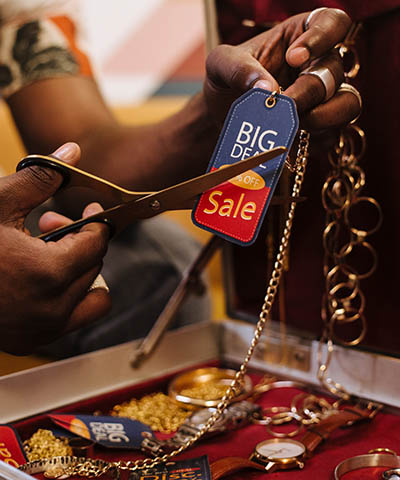Profit margins can be tight for small retailers, what with expenses like retail leases, employees, advertising and taxes, let alone the cost of goods sold. While “Keystoning” (setting prices at double the product wholesale cost) has been a rule of thumb in retail, other factors including what the market will bear, may impact your prices. The need to maintain profit margins is often at odds with downward pressure exerted on prices by the big-box chains, online retailers, etc.
There are multiple strategies for setting retail prices. A recent Intelligence Node article lists seven pricing strategies. We will look at a few of them here.
Keeping It Simple
While some retail categories, like apparel and jewelry, have higher standard markups, “keystoning” is the starting point for most small, independent retailers. It keeps things simple, since you just double the wholesale price you paid for the product. Of course, there are other overhead expenses which must come out of that doubling of the product cost. Some experts are recommending increasing the markup percentageThis would continue a trend that has been going on for a while; there is no pricing strategy that is etched in stone, after all, unless you are in a franchise situation where the franchisor sets the prices.
And that is another pricing strategy – MSRP – or just using the “Manufacturer’s Suggested Retail Price.” Again, it keeps things simple, but it may not be the most effective approach.
According to Tom Ungrodt, former President and Chief Executive Officer of Ideation, Inc., “A good example of this can be found in the apparel industry. Years ago they started at a 33 percent markup, but over the years this has grown to an 80 percent markup (the equivalent of five times product cost). We should be following this same pattern in the gift industry.” The market will bear some increase, he says. “Moving a store from 53 percent Cost of Sales to 48 percent would add thousands of dollars to the bottom line overnight, with all other variables remaining the same.”
In other words, if your hard product cost is 53 percent of the price, increase the price enough to make your cost 48 percent of the price and you’ve got an instant five percent increase in profit. Price increases don’t even have to be noticable. If you are selling a discounted item, going to .49 or .99 rather than the even number above or below is found to be best.
Discount Pricing
The temptation can be strong to see what others are charging and undercut them slightly to drive sales, but if your competitor does the same thing, it can result in a “race to the bottom,” where successive price cuts make profit less likely. An alternative is “Loss-leading Pricing,” where you select a product or a few products to have an attractive price to get traffic, but you don’t reduce the prices of everything in your store. That way, people are drawn by the loss leader and may buy other things while they are in your store.
Below or Above?
Examples of BELOW pricing, like “Discount Pricing” and “Loss-leading Pricing,” were discussed above, but an equally valid strategy is to price ABOVE the competition to represent your products and buying experience as more luxurious and exclusive. There is definitely a segment of your potential customers who view low-priced products as inferior and high-priced products as superior, whether they really are or not. With this kind of customer, discount pricing could actually discourage sales. For them, it would be better to keep the price high, while making them feel special, giving them an exclusive buying experience. You may need to think about what value-added features you can employ.
Other strategies mentioned by Intelligence Node include:
- Dynamic Pricing – employed by large retailers with access to “big data” and systems which can automatically adjust pricing, depending on a variety of factors like demand, competitor prices, stock movements, etc.
- Multiple Pricing – most commonly seen in the grocery sector, and sometimes in the apparel sector. In this case, the retailer sells more than one product at one single price.



